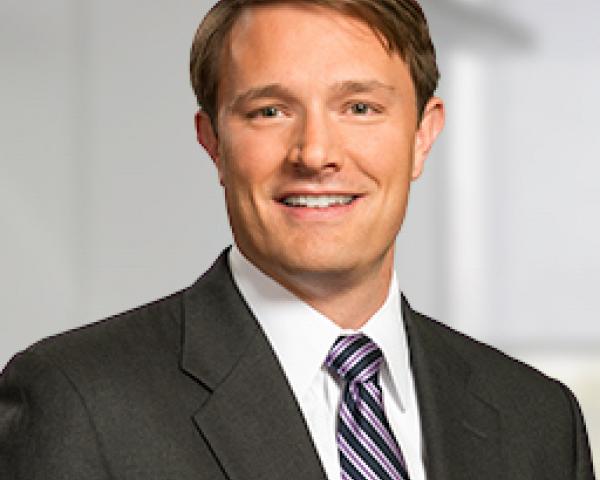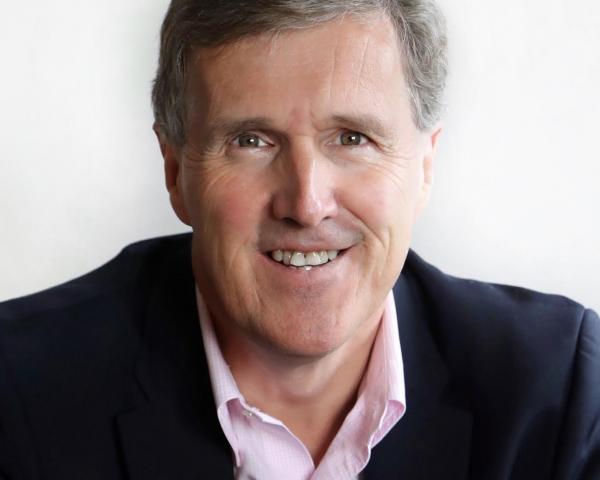The Planning Process in a Twitter World
Does your organization live its Purpose, with Passion, Persevering regardless of the circumstances?

Does your organization live its Purpose, with Passion, Persevering regardless of the circumstances?

Get Involved
Our authors are what set Insurance Thought Leadership apart.
|
Partner with us
We’d love to talk to you about how we can improve your marketing ROI.
|

Mike Manes was branded by Jack Burke as a “Cajun Philosopher.” He self-defines as a storyteller – “a guy with some brain tissue and much more scar tissue.” His organizational and life mantra is Carpe Mañana.
Following a catastrophe, resources are often stretched thin. It is important to create milestones and hold everyone accountable.

Get Involved
Our authors are what set Insurance Thought Leadership apart.
|
Partner with us
We’d love to talk to you about how we can improve your marketing ROI.
|

Clark Schweers, principal and leader of BDO’s forensic insurance and recovery practice, has significant experience advising organizations on the quantification and compilation of complex insurance claims for insured businesses.
Open enrollment for individual health policies is coming up, and significant changes will affect those applying for or altering coverage.

Get Involved
Our authors are what set Insurance Thought Leadership apart.
|
Partner with us
We’d love to talk to you about how we can improve your marketing ROI.
|

Tony Steuer connects consumers and insurance agents by providing "Insurance Literacy Answers You Can Trust." Steuer is a recognized authority on life, disability and long-term care insurance literacy and is the founder of the Insurance Literacy Institute and the Insurance Quality Mark and has recently created a best practices standard for insurance agents: the Insurance Consumer Bill of Rights.
Insurers can draw on NASA-like capabilities to monitor disasters and mitigate the effects.

Get Involved
Our authors are what set Insurance Thought Leadership apart.
|
Partner with us
We’d love to talk to you about how we can improve your marketing ROI.
|

Denise Garth is senior vice president, strategic marketing, responsible for leading marketing, industry relations and innovation in support of Majesco's client-centric strategy.

Sathya Sethuraman is an insurance industry strategist and thought leader with over 20 years of experience. He is a trusted advisor to Fortune 100 global insurance and financial services enterprises and has led large-scale digital transformation initiatives.
While 68% of insurers say digital distribution is the key to growth, fewer than 25% are fully happy with their efforts to date.

Get Involved
Our authors are what set Insurance Thought Leadership apart.
|
Partner with us
We’d love to talk to you about how we can improve your marketing ROI.
|

Eric Gewirtzman, CEO and co-founder of Bolt Solutions, is a leading force for innovation in the insurance industry, blending more than 20 years of expertise with extensive experience in creating and delivering game-changing insurance-related products and services.
Workers' comp is founded on the "grand bargain," yet few seem to remember what it is or why it was made. That's a big problem.

Get Involved
Our authors are what set Insurance Thought Leadership apart.
|
Partner with us
We’d love to talk to you about how we can improve your marketing ROI.
|

Bob Wilson is a founding partner, president and CEO of WorkersCompensation.com, based in Sarasota, Fla. He has presented at seminars and conferences on a variety of topics, related to both technology within the workers' compensation industry and bettering the workers' comp system through improved employee/employer relations and claims management techniques.
Policy administration systems are becoming microservices that are integrated into other functions and may become invisible to users.

Get Involved
Our authors are what set Insurance Thought Leadership apart.
|
Partner with us
We’d love to talk to you about how we can improve your marketing ROI.
|

Chuck Ruzicka is a vice president of research and consulting at Novarica with extensive expertise in IT leadership and business transformation, as well as technology strategy for personal lines, commercial lines, workers compensation, life and specialty lines.
The Insurer of the Future will do little auto business. Insurers that remain focused on this segment will shrink drastically or fail.

Get Involved
Our authors are what set Insurance Thought Leadership apart.
|
Partner with us
We’d love to talk to you about how we can improve your marketing ROI.
|

Alan Walker is an international thought leader, strategist and implementer, currently based in the U.S., on insurance digital transformation.
You can't quantify with any precision something as novel as OnStar was. Yet companies routinely insist on such models and pretend they mean something.

For me, one of the great moments in innovation history came in the mid-1990s as General Motors was considering rolling out OnStar across its product line. The CEO, Rick Wagoner, was understandly nervous about installing the electronics for the novel communications system in the factory. As an after-market choice for customers at far-higher cost, OnStar would have little chance of achieving critical mass, but Wagoner dreaded the thought of increasing the base price of vehicles, even for those who wouldn't want OnStar. He asked his senior VP of strategy, Vince Barabba, what sort of return to expect from OnStar subscriptions and related services. Barabba replied, "I could give you a model, but we both know I'd be making up the numbers, right?"
How perfect.
Of course, he'd be making up the numbers. You can't quantify with any precision something as novel as OnStar was. Yet companies routinely insist on such models and pretend they mean something. As a result, companies kill innovations whose mythical numbers don't clear a hurdle (one that is often set by traditional parts of a business, which are threatened by the innovators).
To Wagoner's credit, he merely grumbled about the lack of specificity and asked how quickly Barabba and his colleague Nick Pudar could tell him whether OnStar was badly off-track. Told that he could know within months, Wagoner authorized the $100 million bet on OnStar (which Barabba had artfully pitched to him as about the cost of changing a fender on a line of cars). OnStar soon became a major success. Six years ago, with the S&P 500 about half of what it is now, Fortune estimated that OnStar would command at least a $7 billion valuation if spun off as a standalone business.
The OnStar story springs to mind because Barabba, who has been a friend and colleague for going on 20 years, just published a book called "Wise Decision Making" that explores the many valuable lessons about innovation that he earned in a long and distinguished career. Those lessons run the gamut from OnStar's multibillion-dollar success to an iconic failure: Kodak.
Barabba was the director of market research there when the topic of digital photography first surfaced, in the early 1980s. He did a study that said Kodak was safe for a time but that warned about milestones that digital photography would reach (cost, resolution, printability, etc.) and that would usher it into the mainstream. The study was remarkably accurate, but Barabba could only watch as Kodak's top executives heard the "safe" part of his message and buried the rest in a file drawer.
Along the way, Barabba was twice director of the U.S. Census Bureau, where he was the defendant in a landmark case (Seymour vs. Barabba) that reached the Supreme Court in 1977 and settled a key issue about the role of the bureau. Barabba argued that the Census Bureau should just count; anyone who wanted to try to extrapolate to find missing people or otherwise adjust the count could do so on their own. Barabba won.
It's hard to summarize "Wise Decision Making," but here are two lessons that strike me as important now that innovation is finally coming to insurance and risk management:
• Don't try to model everything. You're just making up numbers. Instead, think about buying an option on an innovation. Make an investment, as GM did with OnStar, that is as small as possible but that gives you a real option on a big payday. Then decide as quickly as possible whether to exercise that option or to let it lapse.
• Keep "decision records." These lay out all the assumptions that go into a major decision—about competitors, technology, the economy, etc. If you track the assumptions, you will be able to learn your fate far sooner than if you wait to see the effects on revenue and profits. Kodak would have saved itself years of misspending to support its traditional business if it had noticed that its assumptions on digital photography's limitations were being rapidly invalidated. GM benefited from decision records because it saw the original assumption about OnStar go away—that GM would have to install cell towers across the entire country. Once OnStar could use existing satellites, the initial "no" became a "yes."
There is much more, but I should leave that to the book. I hope you'll pick up a copy and will get as much out of it as I have from sitting at Vince's elbow for many years now.
Cheers,
Paul Carroll,
Editor-in-Chief
Get Involved
Our authors are what set Insurance Thought Leadership apart.
|
Partner with us
We’d love to talk to you about how we can improve your marketing ROI.
|

Paul Carroll is the editor-in-chief of Insurance Thought Leadership.
He is also co-author of A Brief History of a Perfect Future: Inventing the Future We Can Proudly Leave Our Kids by 2050 and Billion Dollar Lessons: What You Can Learn From the Most Inexcusable Business Failures of the Last 25 Years and the author of a best-seller on IBM, published in 1993.
Carroll spent 17 years at the Wall Street Journal as an editor and reporter; he was nominated twice for the Pulitzer Prize. He later was a finalist for a National Magazine Award.
Despite AI, we are a long way off from robotic nurses. The question is whether education can provide us humans the skills we'll need.

“I think the guiding principle for government should be to protect and enable/retrain the worker, not protect the job. Policy makers and educators should focus on making sure that workers are as equipped as possible to transition to new opportunities…” —Peter RobinsonA recent OECD report finds that low- and middle-income earners have seen their wages stagnate and that the income share of middle-skilled jobs has fallen. Rising inequality has led to concerns that top earners are getting a disproportionate share of the gains from global “openness and interconnection.” This summer, the OECD Employment Outlook 2017 revealed that job polarization has been “driven by pervasive and skill-biased technological changes.” Founded in 1945, the U.S. Council for International Business (USCIB) builds awareness among business executives, educators and policy makers around issues related to employment, workforce training and skills enhancement. CMRubinWorld spoke with USCIB president and CEO Peter M. Robinson, who serves as a co-chair of the B20 Employment and Education Task Force, through which he helped develop recommendations to the G20 leaders on training for the jobs of the future. Robinson also serves on the board of the International Organization of Employers, which represents the views of the business community in the International Labor Organization. Peter, welcome. How severe do you believe jobsolescence will be over the next 20 years? How big will the challenge be to offset it and maintain a growing workforce? I really don’t think the overall effect will be as dramatic as some people fear — at least for the medium term, as far as we can tell. There is an over-hype factor at play, but the consequences still deserve serious attention. For one thing, so many of the jobs in the U.S. and other advanced economies are in the service sector and involve interacting with other people. Despite all the advances in AI, we are still a long way off from robotic nurses or home health aides. Overall, history tells us that at least as many new jobs are created as are displaced by technological innovation, even though transitions can be difficult in some sectors and localities, and as long as upskilling takes place.
“The biggest threat is that our educational institutions won’t be able to keep pace with new skills demands.” —Peter RobinsonWhat do you think are the biggest obstacles facing college grads today trying to enter the workforce? I actually think the greatest obstacles are faced by those who don’t make it to college or some form of higher education beyond high school (a four-year degree is not the right path for everyone). A 2014 Pew survey found that among workers age 25 to 32, median annual earnings of those with a college degree were $17,500 greater than for those with high school diplomas only. Obviously, everyone at whatever educational level needs to keep their skills sharp, and governments should join with employers and educators to instill better life-long learning. But there are far fewer established paths toward long-term employment at a middle-class level of income for those who don’t graduate from college. A greater emphasis on vocational education and apprenticeships would help. We strongly support the work being done by Secretary of Labor Acosta to promote apprenticeships. See also: The Sad State of Continuing Education Given that machines are in the process of stripping white collar workers from their jobs, what kind of skills are key manufacturing and service industries going to need from new employees? I think the premise of your question is overstated. We’re all being told that our jobs are doomed by robots and automation. But the OECD estimates that only 9% of jobs across the 35 OECD nations are at high risk of being automated — although, of course, even 9% can be generative of social difficulties. But there is an established track record across history of new technologies creating at least as many new jobs as they displace. Usually these new jobs demand higher skills and provide higher pay. The biggest threat is that our educational institutions won’t be able to keep pace with new skills demands.
“It is becoming clear that versatility matters in a constantly changing world, so Jim Spohrer’s IBM model of a “T-shaped” person holds true: broad and deep individuals capable of adapting and going where the demand lies.” —Peter RobinsonIn an economy with a significant on-demand labor force, what competencies will these workers need to compete? There are two types of competencies that will be needed: “technical” — or, in other words, related to deep knowledge of a specific domain, whether welding or optogenetics; and “transversal,” which applies to all occupations. Those are described by the Center for Curriculum Redesign as skills (creativity, critical thinking, communication, collaboration), character (mindfulness, curiosity, courage, resilience, ethics, leadership) and meta-learning (growth mindset, metacognition). How will managerial skill requirements change as a result of major structural changes that are likely, including human replacement by machines and growth of the on-demand economy? OECD’s BIAC surveys of 50 employer organizations worldwide has shown that employers value not just skills as described above but also character qualities, as well. Further, it is becoming clear that versatility matters in a constantly changing world, so Jim Spohrer’s IBM model of a “T-shaped” person holds true: broad and deep individuals capable of adapting and going where the demand lies.
“We often hear about the need for more STEM education. But I think there is an equal need for a greater emphasis on the humanities and the arts, for their intrinsic value, as well as for developing skills and character qualities.” —Peter RobinsonWhat central changes in school curricula do you envision, both at the secondary school and college levels? We often hear about the need for more STEM education. But I think there is an equal need for a greater emphasis on the humanities and the arts for their intrinsic value, as well as for developing skills and character qualities as described above. As David Barnes of IBM wrote recently, these skills are more durable and are also a very good indicator of long-term success in employment. See also: Innovation Maturing Into Major Impacts How can the evolving changes in competencies required for employment be effectively translated into school curricula? Where are the main opportunities to enable this? Assessment systems? Business/education collaboration? Curriculum change? I’d go back to something else David Barnes said: We need much stronger connections between education and the job market, in the form of more partnerships among employers, governments and education institutions. Everyone needs to step up and create true partnerships. No one sector of society can address this alone. OECD’s BIAC has also documented employers’ wishes for deep curricular reforms to modernize content and embed competencies to meet today’s market needs. What role should government play in ensuring citizens receive a quality and relevant education given the challenges that lie ahead? I think the guiding principle for government should be to protect and enable/retrain the worker, not protect the job. Policy makers and educators should focus on making sure that workers are as equipped as possible to transition to new opportunities as these develop, and on ensuring that businesses have the freedom to pivot and adopt new technologies and business processes. The article was originally published on CMRubinWorld under the headline, "The Global Search for Education: Jobsolescence – A Conversation with USCIB President and CEO Peter Robinson."
Get Involved
Our authors are what set Insurance Thought Leadership apart.
|
Partner with us
We’d love to talk to you about how we can improve your marketing ROI.
|

Cathy M. Rubin is the founder of CMRubinWorld, an online publishing company focused on education, entertainment and lifestyle. She is also the co-founder of Planet Classroom, a reality show for education, and the co-founder of Henmead Enterprises, Inc., a publishing and strategic consulting company.